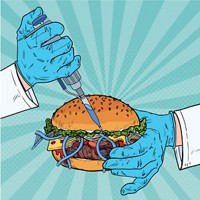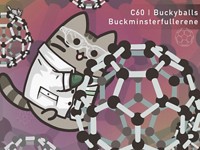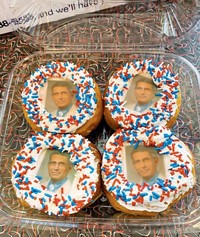Advertisement
Grab your lab coat. Let's get started
Welcome!
Welcome!
Create an account below to get 6 C&EN articles per month, receive newsletters and more - all free.
It seems this is your first time logging in online. Please enter the following information to continue.
As an ACS member you automatically get access to this site. All we need is few more details to create your reading experience.
Not you? Sign in with a different account.
Not you? Sign in with a different account.
ERROR 1
ERROR 1
ERROR 2
ERROR 2
ERROR 2
ERROR 2
ERROR 2
Password and Confirm password must match.
If you have an ACS member number, please enter it here so we can link this account to your membership. (optional)
ERROR 2
ACS values your privacy. By submitting your information, you are gaining access to C&EN and subscribing to our weekly newsletter. We use the information you provide to make your reading experience better, and we will never sell your data to third party members.
Graduate Education
Newscripts
Fat bear measurements and piñata parties for papers
by Megha Satyanarayana
October 31, 2021
| A version of this story appeared in
Volume 99, Issue 40
The bear necessities

Some weeks are just bear-ter than others. Especially if you are a fan of Fat Bear Week, a US National Park Service event held in late September and early October to pick the best fat bear at Alaska’s Katmai National Park and Preserve. The competition, in which the public votes for their favorite fat bear, draws attention to one of nature’s most incredible feats of survival—the weeks-long fish feast that brown bears partake in as they prepare to hunker down for one of the harshest winters on the planet.
But how big do these bears get? The US Department of the Interior says these bears suppress the hormone that tells them they are full and estimates some bears gain up to 2 kg per day during their period of nonstop eating. These bears start out weighing as much as 900 kg, and they put on dozens of kilograms during this period.
To weigh the bears, says Joel Cusick, a geographic information system technician with the park service, you’d need to tranquilize them, then get them to a scale. Not so easy with a massive bear. So Cusick has developed a method to measure the volume of these giants using the same types of laser scanners that surveyors use on roads.
“It’s remote, it’s not invasive, and you don’t have to dart them,” Cusick tells Newscripts.
The technicians and park staff stand on a platform and wait for a bear to come to a section of the park known as Brooks Falls, where the bears don’t have to move much to catch a meal because the fish are so plentiful. Then Cusick scans one side of the bear with a Trimble TX scanner for several seconds. It’s not a complete measurement, he says, but it’s a good start.
The scanner was first deployed in 2018, and in 2019, Cusick and park staff measured the bears known as Chunk, Otis, Walker, Divot, and the appropriately named 747. That bear, Cusick says, came in at about 0.68 m3, or close to 680 L. In 2020, Cusick says, over 4 days and 10 sessions, they ran 84 scans of bears at Brooks Falls.
COVID-19 and staffing shortages put a damper on the 2021 measurements, but Cusick says they want to keep honing the process: 2018 was all about seeing if the method would even work. The next few years could yield not only valuable data but a solid technique that biologists studying large animals could use.
“Maybe this idea could be taken on by a wildlife biologist to derive volume and size,” he says of bears, but the measuring technique could also be used for other large animals that tend to stay still, like tortoises or walruses. This Newscriptster thinks it’s a bear-y good idea.
A smashing review

Sometimes a tweet in jest becomes a tweet in deed.
Daniel Gonzales, a neuroscientist at Purdue University, retweeted a deeply philosophical question about the lack of piñatas at adult parties with this bit of wit: “In the Gonzales Lab when you get a paper accepted we will have a piñata that is plastered with the reviewer comments.”
Gonzales is a postdoctoral fellow and tells Newscripts that it will be a while before he has his own lab, but as that tweet took off, he decided that what started as a joke turned into something he actually wants to do someday.
“The more I thought about it,” he says, “when you get a paper accepted, you celebrate with beer or champagne, and I thought a piñata would add some flavor and spice to it.”
Gonzales is no stranger to the piñata—a candy-filled papier-mâché animal or cartoon character that you smash with a stick until the sweets drop out. He is Latino, and piñatas are a huge part of many cultural celebrations in Mexico and surrounding areas. Plus, he’s from Texas, and as this Texan Newscriptster can tell you, piñatas are a staple of Tex-Mex culture.
What started as a “silly tweet,” he says, has turned into something that he hopes will bring his future lab together, express the kind of cultural diversity he has loved during his career as a scientist, and bring “more of a richness to the way we do science.”
Please send comments and suggestions to newscripts@acs.org.





Join the conversation
Contact the reporter
Submit a Letter to the Editor for publication
Engage with us on Twitter